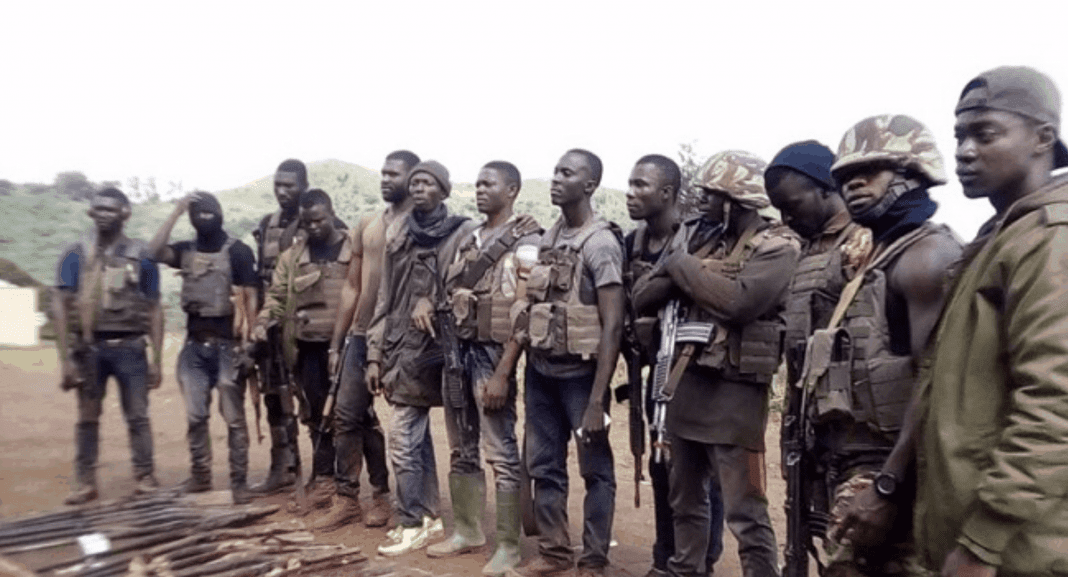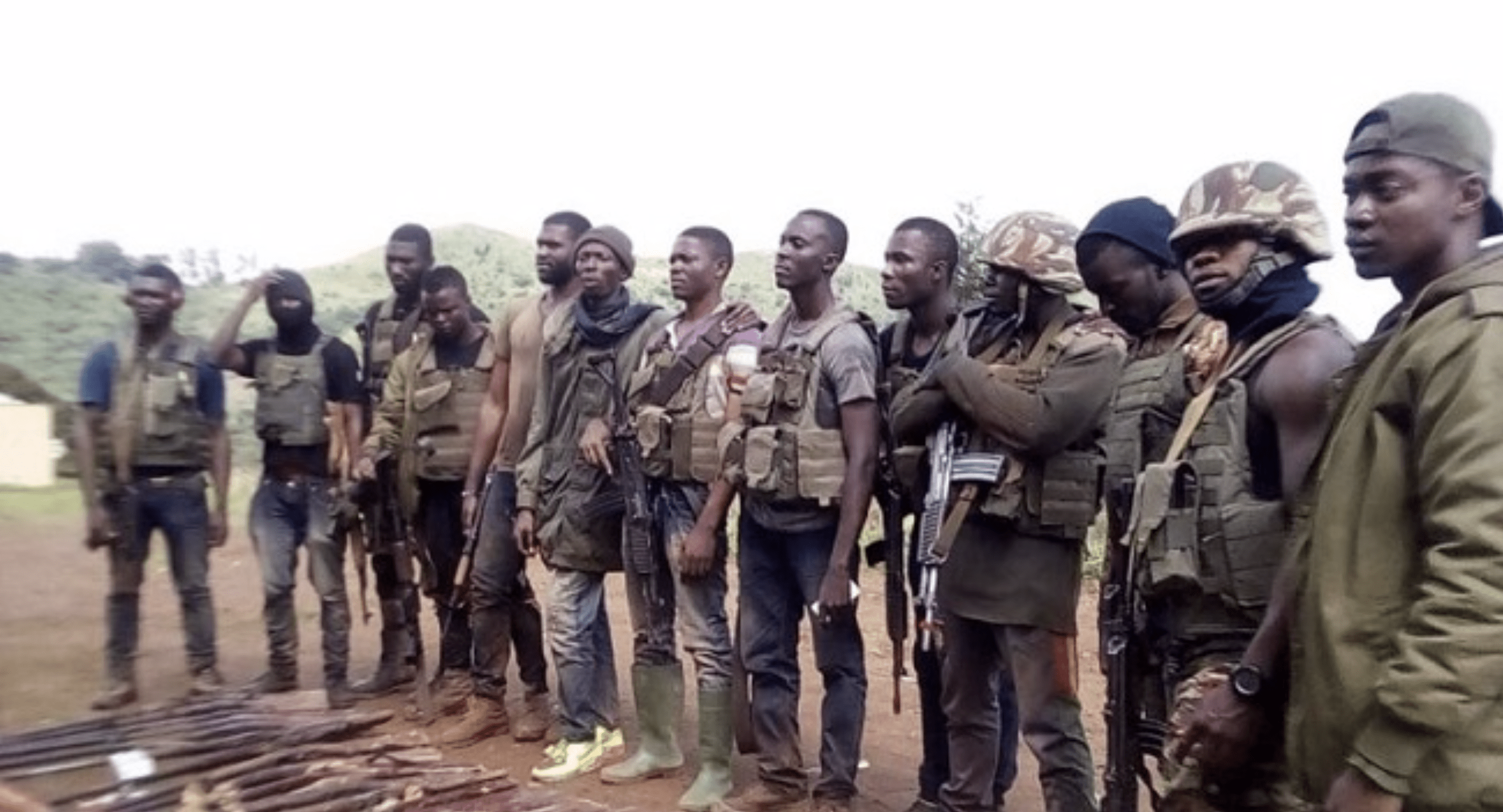
Since 2016, Cameroon has experienced an escalating conflict that began as a peaceful protest from a self-perceived marginalized minority and now has the potential to lead to civil war. The International Crisis Group (ICG) says the death toll since the start of the fighting exceeds 500 civilians and more than 200 security forces. Around 437,000 people have fled the fighting according to the United Nations.
Human rights groups have both accused government security forces and separatists of abuses, including targeting civilians. Amnesty International reportsarmed separatists have stabbed to death and shot military personnel, burned down schools and attacked teachers, while security forces have tortured people, fired on crowds and destroyed villages. The African Union has called for dialogue but affirmed its “unwavering commitment to the unity and territorial integrity of Cameroon.”
- Cameroon was colonised by Germany in 1884.
- British and French troops forced the Germans to leave in 1916.
- Cameroon was split in 1919 – 80%to the French and 20% to the British.
- French-run Cameroon becomes independent in 1960.
- Following a referendum in 1961, the British Southern Cameroons join Cameroon, while Northern Cameroons join English-speaking Nigeria.
- President Biya, relected in Oct 2019, has been in power since 1982, making him one of the longest ruling leaders in the world.
- Cameroon only had two presidents since gaining independence in 1960
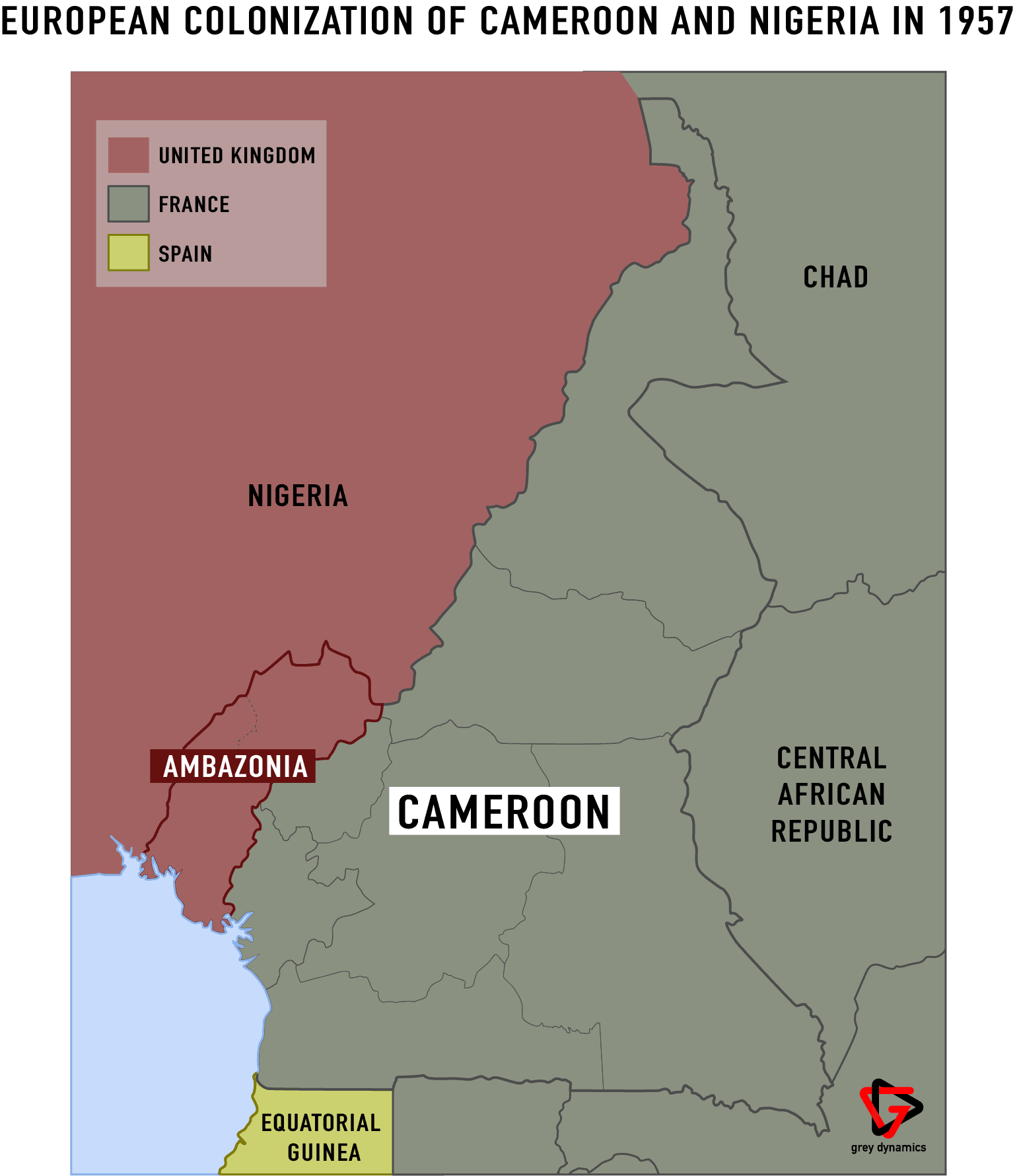
The Long Road to Ambazonia
Ever since the 1961 referendum, many Anglophones complained that their regions were neglected and excluded from power. Despite the emergence and continued demand of several Anglophone political and social movements, including continuous protests and declarations of independence in 1999 and in 2009, Cameroon became increasingly centralized and further weakened the Anglophones’ influence.
Violence and unrest escalated in late 2016 after a series of strikes and protests by teachers, lawyers and students. Originally most Anglophones in Cameroon wanted their grievances addressed and only a minority wanted an independent state. However, their protests against discrimination were met with a violent response from the government security apparatus. On 1 Oct 2017, the independence of a new state of “Ambazonia” was proclaimed — the anniversary of the region’s independence from Britain.
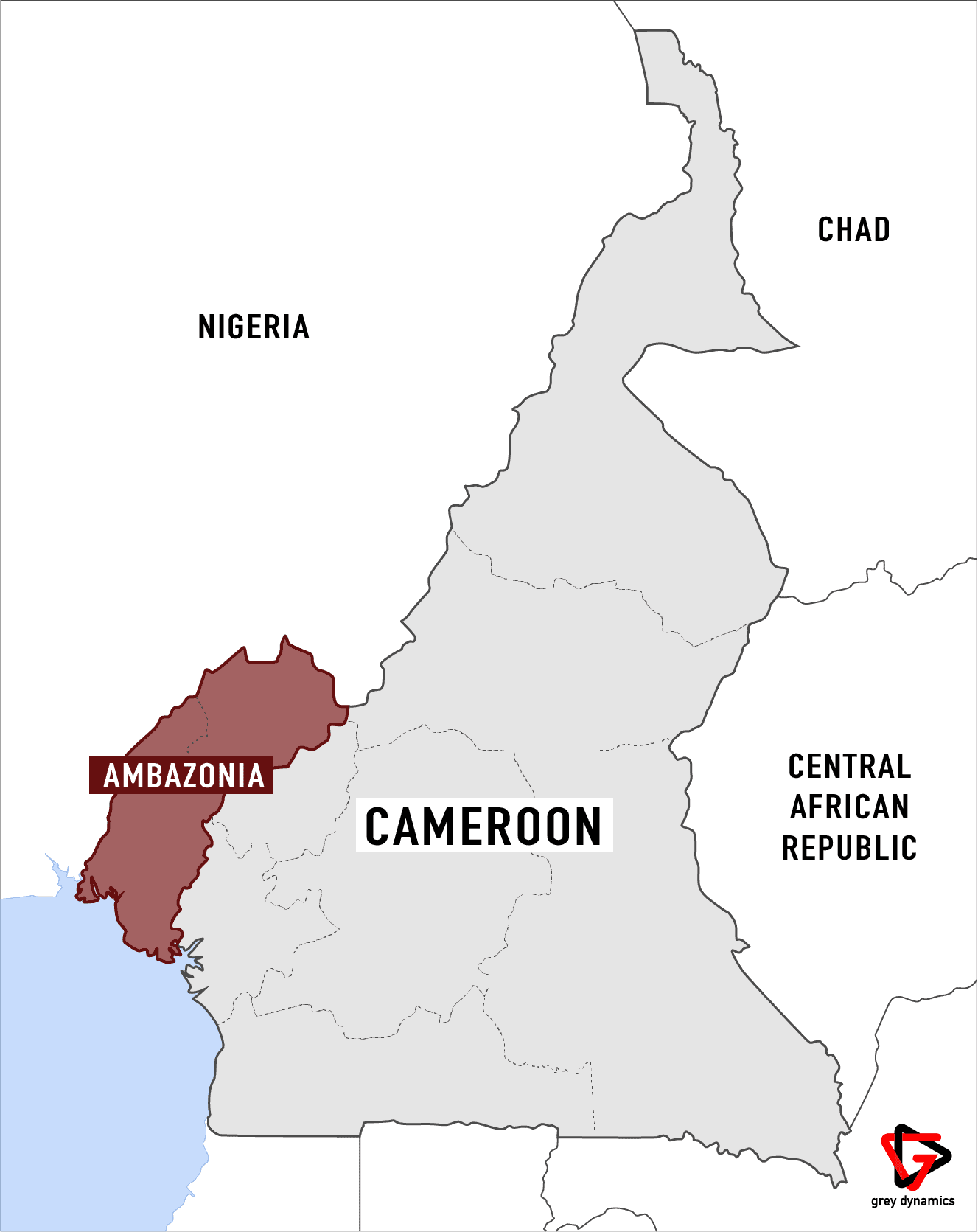
From peaceful protest to rural insurgency
After the proclamation of independence, the military stepped in and opened fire from attack helicopters. Thousands of Anglophones fled the crackdown, which Cameroon authorities said was necessary to restore peace and curb banditry or even a whiff of civil war comments. They described it as an anti-terrorist operation. Some activists were also charged under Cameroon’s anti-terror law, tried and sentenced before military courts. A month later, separatists launched the first guerrilla attacks on security forces.
The ICG estimates that around 10 armed separatist groups exist in Cameroon. “They are not operating under one broad front, but there is very likely to be coordination between political elements in exile,” ICG Cameroon analyst Richard Moncrieff told the BBC. He added, “they are waging a classic rural insurgency. They don’t control territory all the time. They move around. They use hit-and-run tactics against isolated units of the security forces or prestigious targets – like local chiefs, whom they kidnap,”
It is believed that the Ambazonia Self-Defence Council (ASDC), which is also known as the Ambazonia Restoration Forces (ARF), is the largest armed group, incorporating smaller militias like the Seven Karta, the Red Dragons and the Tigers. In 2018, the Ambazonian Separatists expanded their activities geographically from 5 provinces within Northwest and Southwest Cameroon to 12. Last year the groups also engaged in more lethal violence and began targeting civilians.
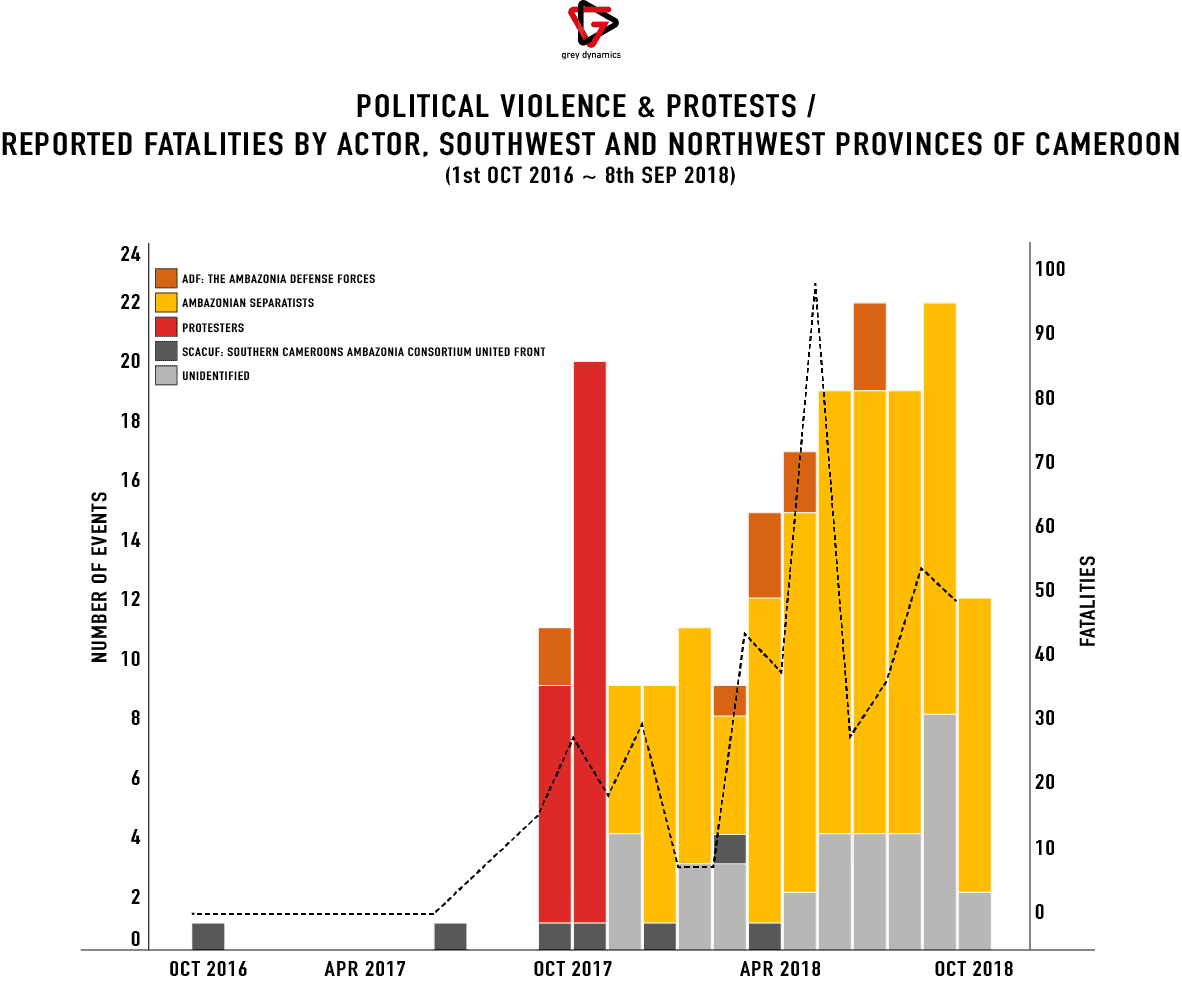
Ungovernable and at the mercy of Boko Haram
Nigeria-based Cameroon analyst Emeka Okereke told the BBC that in just a few years, the militias have made many small towns and villages in the Anglophone regions “ungovernable”. He added, “they probably have 500 to 1,000 active fighters, but more importantly they have the morale and determination to fight for the independence of what they call Ambazonia state”. The separatist movement also is gaining increased momentum while government forces continue a repressive crackdown.
On the 12th of April, Cameroonian security forces reportedly killed five civilian men, one of whom was beheaded, in an attack on a village in an anglophone region. Human Rights Watch reported three of the bodies were later discovered mutilated, including two found with their hands tied and their genitals cut off. Also, this month, separatists kidnapped an entire football team while training at a university campus. They were later released, but a ransom was reportedly paid, and some players claim to have been tortured.
So far there has not been a serious attempt for dialogue to address the genuine grievances of the separatist region. The only government response has been to fight fire with fire. This is not only putting more innocent lives at risk but is also a short-sighted response. They have been an ally in the fight against Boko Haram in Nigeria, but Cameroonians continue to suffer at their hands. The group continues to carry out attacks against civilian and military targets in Cameroon’s Far North. The war with Boko Haram has killed 2,000 Cameroonians, displaced 170,000, and triggered the rise of vigilante self-defence groups. The government in Cameroon should negotiate with the lesser domestic threat and focus its efforts on the greater evil to stop a potential civil war.
Image: Cameroon Intelligence Report (link)

